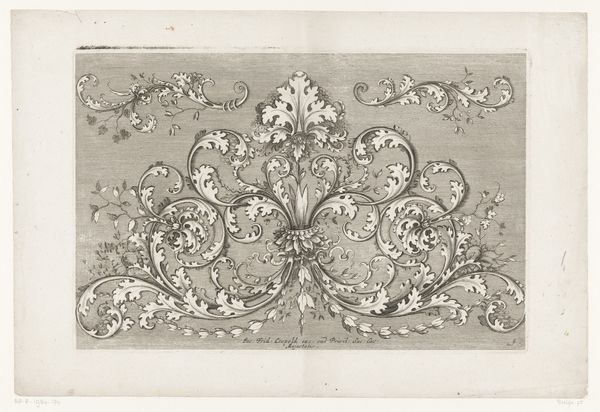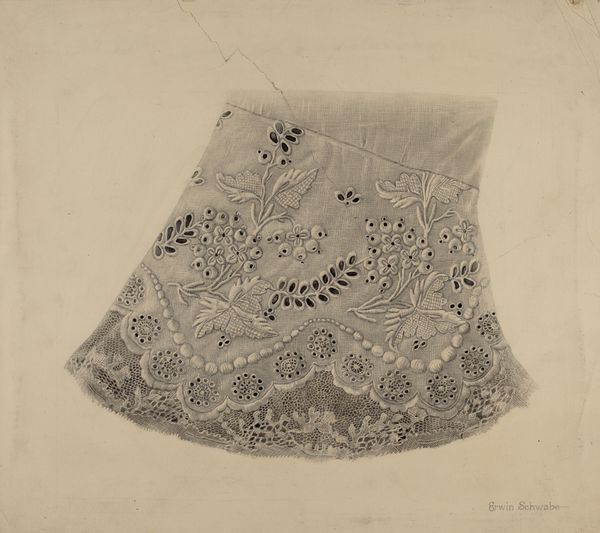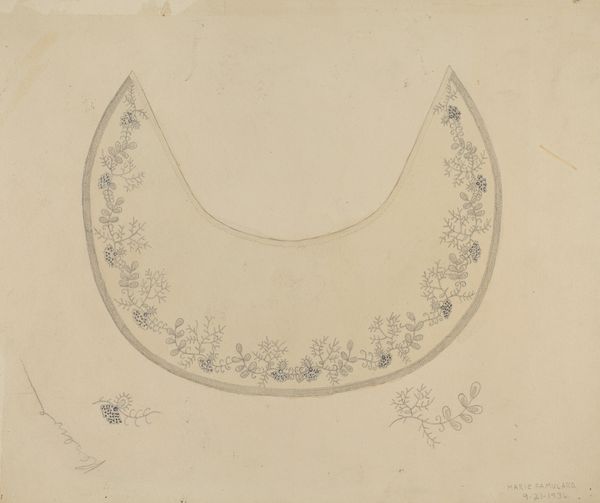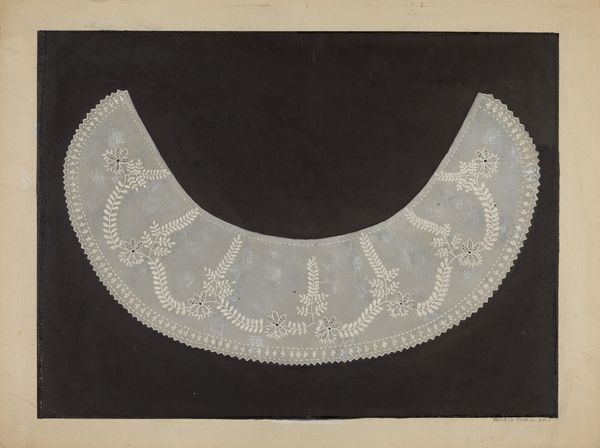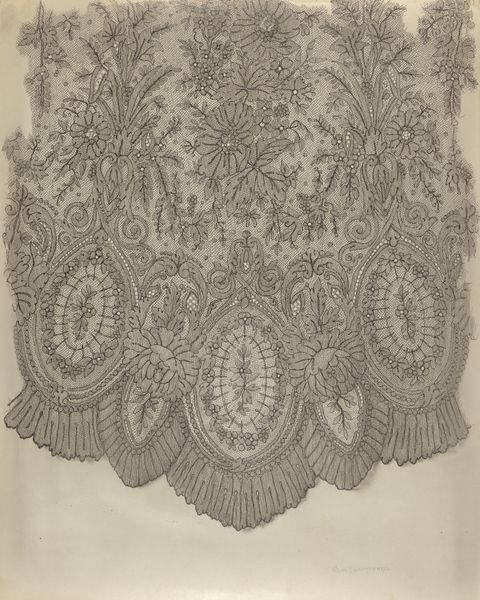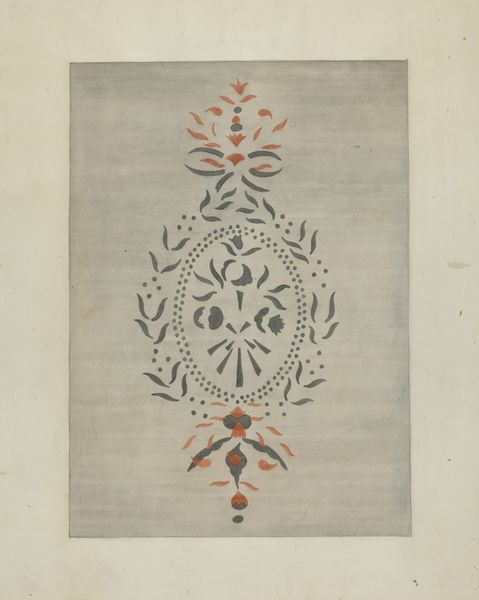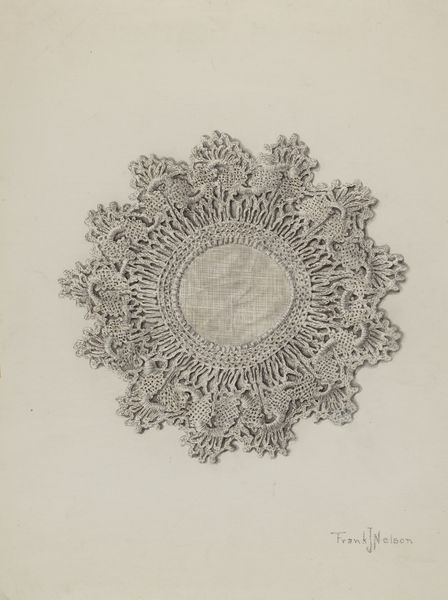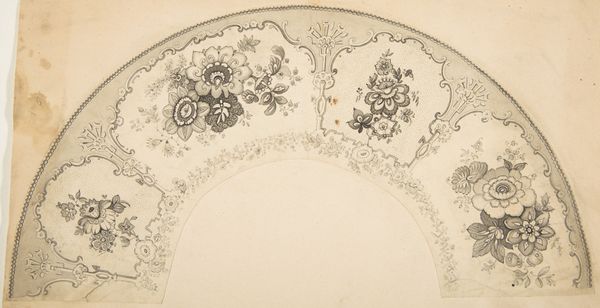
drawing, paper, ink
#
pencil drawn
#
drawing
#
pencil sketch
#
paper
#
ink
#
pencil drawing
#
coloured pencil
#
watercolour illustration
#
decorative-art
#
watercolor
Dimensions: overall: 23 x 29.4 cm (9 1/16 x 11 9/16 in.) Original IAD Object: 13" high; 20" long; 16" wide
Copyright: National Gallery of Art: CC0 1.0
Curator: This lovely watercolor, ink, and pencil drawing is called "Bandbox Cover," and it was created by Gilbert Sackerman sometime between 1935 and 1942. What strikes you first about it? Editor: Immediately, I'm drawn to the melancholic mood. The monochrome palette and dense floral arrangement give it a rather somber, romantic air. Curator: It’s intriguing how the materials enhance that feeling. Sackerman likely used readily available, inexpensive materials, paper, pencil, ink, watercolor to craft this bandbox cover design. The design feels both precious and disposable. Do you think the material choice democratizes it somehow? Editor: Definitely, the accessibility of those materials would make the creation of such beauty possible for more people, blurring the lines between "high" art and domestic craft. And consider the symbolism – flowers, especially roses, traditionally represent love, beauty, but can also denote loss and the ephemeral nature of life. It’s a complex, visually coded message. Curator: And it's a very practical one too, no? Bandboxes were common for storing personal items, particularly hats, so these were decorative items used for everyday storage, and often covered with patterned papers. Think of the labor involved in decorating each box. Do the floral choices hint at Sackerman’s target consumer base perhaps? Editor: Possibly, there’s a stylized quality to these roses that also echoes art deco sensibilities. It might suggest this cover was designed to appeal to a particular modern, fashionable clientele of that period, but the image also speaks of something older than that decade; do you see in its imagery any other historic, romantic notions? Curator: Indeed. We also might wonder if the symmetry of this cover could hint at values beyond its immediate purpose; mirroring and symmetricality could, on a grander scale, reflect order, reason, and an aesthetically designed consumer culture emerging from its own historical conditions, in the inter-war period. It is fascinating to imagine these bandboxes sitting on shelves, these material expressions shaping identities in daily lives. Editor: I see it more as these repeating floral motifs mirroring the cyclical nature of life. Curator: I would venture both aspects – materials and images - can’t be mutually exclusive here. Considering the bandbox design alongside the accessible mediums used by the artist might also unveil their reciprocal play – each informing and amplifying the qualities inherent to the other. Editor: An enlightening observation. I appreciate how looking at this design from both an iconographic and materialist perspective has opened up new layers of interpretation. Curator: Precisely, together, we might discover what kind of beauty a humble object such as a bandbox cover, which on first glimpse evokes loss and romantic air, can truly reveal.
Comments
No comments
Be the first to comment and join the conversation on the ultimate creative platform.
